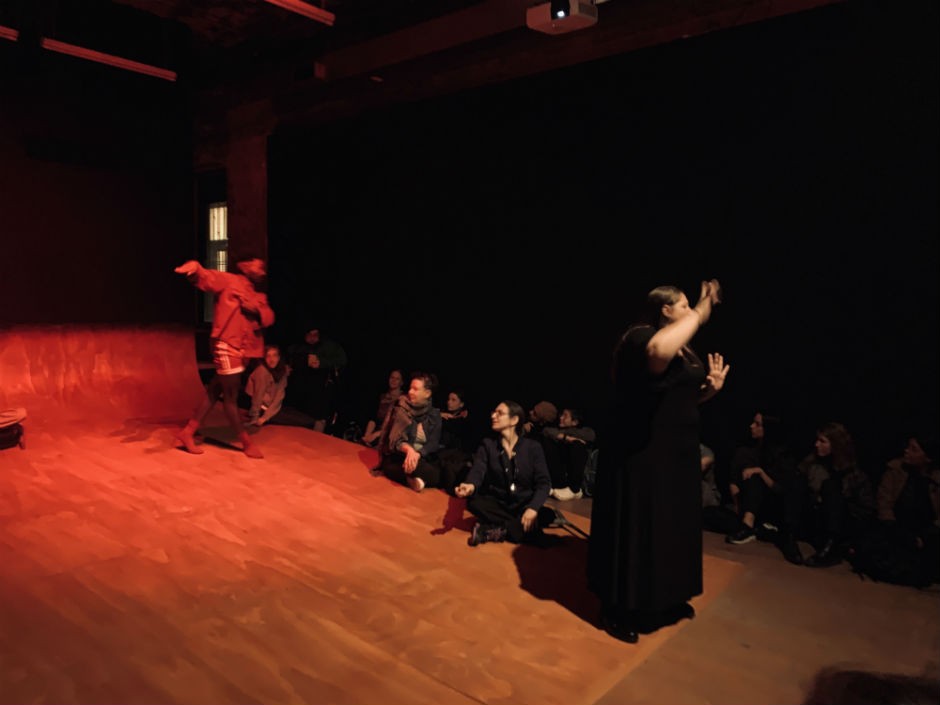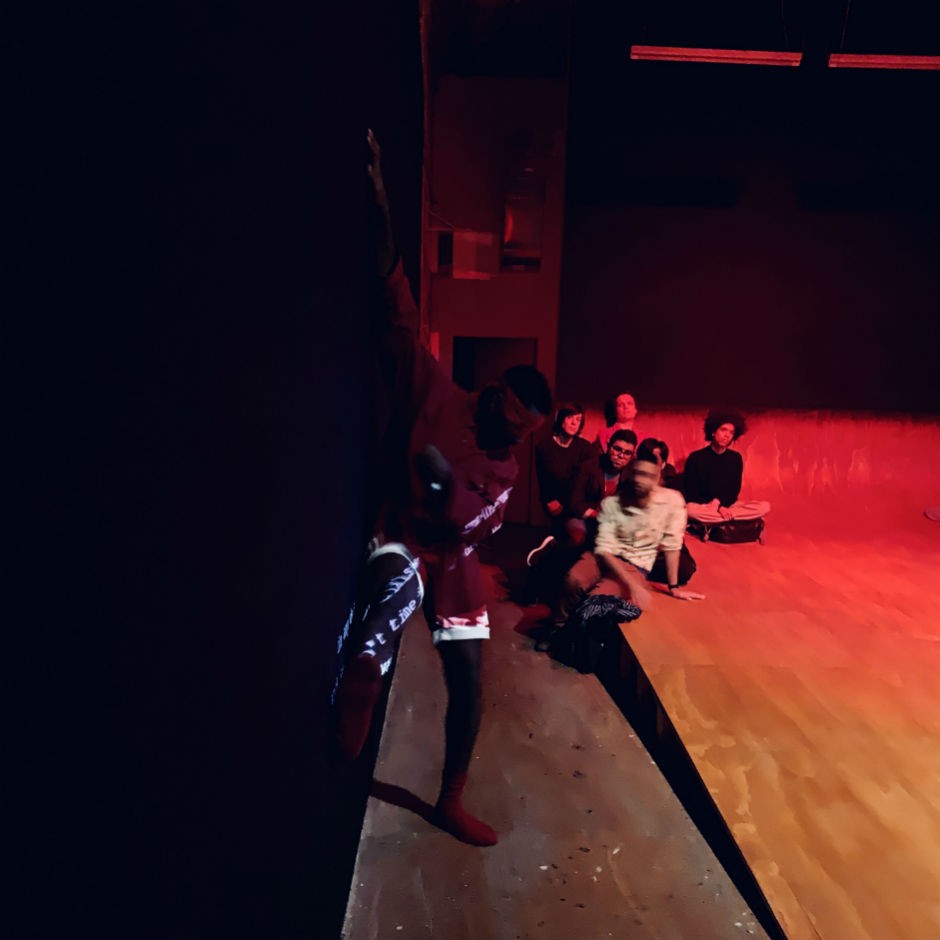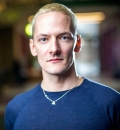Matthew-Robin Nye is a conceptual artist and Joseph-Armand Bombardier PhD student at the Centre for Interdisciplinary Studies in Society and Culture. Nye’s research spans the fields of contemporary art, process philosophy and performance theory to look at how to create a ‘queer utopic space’ or a concept of ‘wildness’. He is a founding member of the Curatorial Research-Creation Collective at the Milieux Institute, a member of the Senselab, and the Institute for Urban Futures.
Blog post
Bodily affordances, gesture in excess

Nonverbal autistic poet and philosopher Tito Mukhopadhyay, in his book Plankton Dreams, describes the lessons that engagement with a neurotypical world has imparted on him, calling his book a ‘syllabus.’ One of these lessons is from the experience of humiliation, at normative efforts to account for and discredit his experience.
This humiliation becomes a pedagogical tool that he employs to investigate the neurotypical world that attempts to categorize him — notably under conceptions of lack or unintelligibility — which in turn spurs him to a humourous empiricist enquiry into the study of those who pathologize him:
Humiliation also made me a scientist! I am the scientist who knows why I have autism: to experience the captivity of intellect by one’s body and to endure it with absurd aplomb, while others struggle even to fathom such captivity. As a social scientist, I know, however, that nobody is free from captivity. One is captive to one’s ego, for example, social obligations, job requirements, et cetera. Which of you neurotypicals is free to sniff a book in public? I have freedom from customary comportment, and as a sniffing scientist, I remain outside the box we term social norms. The rest of you purportedly free people are trapped inside the social box.
— Plankton Dreams, 8
Under a neurotypical disciplinary regime, movement, relationally and gesture become, in the words of autistic artist Amelia (Amanda) Baggs, ‘puzzling’ or ‘mysterious,’ a simpler categorization under the logics of normative relation than accounting for a language that exceeds the representational limitations of the textual.
In her book Relationscapes, Erin Manning, artist, philosopher and theorist of autistic perception, argues that Baggs’ work proposes a diagramming of environment and perception beyond the normative gesture of representation; the diagram becomes a “territory beyond representation. Representation solidifies the imaginary of preexistent worlds and asks thought to fit within their borders” (Manning 217).
The diagramming of Amelia Baggs’ world in their video In My Language (2007) is a presentation of different modes of being in, and thus valuing, the world. This diagramming of gestures that exceed the constraints of the normative interests me.
The narrow beam of normative gesture, interpretable meaning and the ‘use’ and desirability of disability and neurodiversity were at front of mind in a recent exhibition titled L&D Motel by Constantina Zavitsanos, organized by Alex Fleming and Andrew Katchel, and a one-night performance by Jerron Herman at Participant Inc., an artist-run gallery in Lower Manhattan.
In L&D Motel, the exhibition’s introductory text observes, “Zavitsanos’ practice approaches the fundamentals of perception and experience. In these investigations, they use notions of incapacity, debility, and ‘access’ to trouble distinctions between sensing and feeling.” The works, in a blackened room, play with use-value and perception.
Infrared holograms sit at the edge of the visible; a giant ramp, constructed at an American Disability Act-approved inclination, conceals speakers which rumble below the human ability to hear; fragmentary text is overlaid by two projectors onto a wall, made decipherable only when a passing body obstructs one of the two projected lines.
An audio guide to the exhibition upends the primacy of the visual. Each of these interventions acts as a lure to play, engage, seek and find the edges of the perceptible.
Michael Eby, in his review of L&D Motel for the Brooklyn Rail, argues that the exhibition engages with the Marxist conceptions of abject feminized labour, those “forms of laboring activity which capital is either unable or unwilling to accommodate,” providing a view on disabled labour as abject.
Like Baggs or Mukhopadyay, Eby argues that Zavitsanos’ work brings the question of the ‘productivity’ of the disabled body to “this theoretical terrain, linking gendered abjection to disabled abjection. The installation asks what kind of activities are silently exorcized in today’s social production relations and technical divisions of labor, suggesting that the remedies for these political–economic asymmetries may arrive from that which displaces individual Promethean will, the recognition of extrasensory dependencies.”
Returning to Manning, and in addition to this critique of labour and value, I believe that in diagramming a sensory landscape that exceeds neurotypical and ableist orientation, Zavitsonos presents us with a landscape that is in excess of normative perception, and thus, challenges perception’s territorializing logics.
Not only is autistic perception and communication often framed as lack, but, as Baggs points out in their video, many neurotypical frames deny the very existence of autistic perception and communication. Different language is understood not as another mode of relating to the world, but as non-relation — the devaluation of personhood, the production of a non-person.
Artworks such as those by Baggs or Zavitsanos present an accounting of experience that begins in the singularity of personhood, rather than a presumption of what a person might be. While engaging with the semiotics of normative modes of perception or physical embodiment, performance and perception, these works can provide vital insight into how perception and movement are limited and routed.
Like the affordances in Zavitsanos’ installation for perception and movement outside of the normative and ableist realm, Baggs and Mukhopadyay demonstrate the additional orientations that autistic perception might afford, and an attunement to environment (‘world’) that far outstrips what many neurotypical individuals could fathom, let alone perceive.

On October 10, interdisciplinary artist and choreographer Jerron Herman performed in and through Zavitsanos’ installation at Participant Inc., accompanied by two assistants and co-performers: an American Sign Language (ASL) interpreter and an individual providing Audio Description (AD). The audience, totalling around 50, sat on the ramp, floor, chairs provided throughout the space.
Accompanied by a soft soundtrack (Beyoncé) and an intermittent thumping emanating from the ramp as part of Zavitsanos’ installation, Herman danced through the space, bodily responding to the lyrics, occasionally engaging with the interpreters and the projected texts on the wall.
The interpreters were integral components of the work — providing audio interpretation of Herman’s movements, and the installation and environment that his performance traversed, one smiling performer with forearm crutches and a sideways gait moved throughout the space in order to always have a direct view of Herman in order to narrate his actions.
With flowing black hair and long black dress, the ASL interpreter swayed as they signed along to Beyoncé, rapidly interspersing their lyrical interpretation with translation of the Audio Describer’s descriptions.
At moments, the three bodies lined up diagonally across the stage, echoes of Herman’s movements expressed through and across the Audio Descriptor’s body, and in those moments when words did not suffice or could not be found, gesture supplemented text to create an additive or surplus of meaning.
Simultaneously, pleasure crossed each interpreter’s face as they immersed in song and language, humour rippling between the three performers at unexpected encounters, stalls in performance, or joyful expression.
Herman’s movements through the space were slow, deliberate, playful. He fielded the room with an accent on the lateral, or sideways, splitting the usual vertical orientation of a body along horizontal and diagonal axes, leg shooting forward while torso and head tilted back. This was emphasized and echoed through the gentle slope of the large ramp.
The audience, rather than facing Herman on stage, sat in and around him, some sitting on the floor, on chairs, standing or perched on the edges Zavitsano’s ramp.
The rupture in a single mode of presentation — dance — by the active engagement and live interpretation of Herman’s movement by the ASL and AD interpreters, and their continuous reconfiguration around his moving body produced bodily forms that exceeded representation, moving instead toward the diagrammatic, activating, as Manning writes, “a focal point in which the work organizes itself in a refrain of infinite unfolding” rather than the a more traditional bodily bordering in the medium (217).
While one could describe Herman’s left arm, curled from the effects of cerebral palsy, as a site of more limited movement when he dances, the performance showed the fallacy of thinking about this form of embodiment in terms of a limited range of movement.
This conception, should it have existed, of what ‘range of movement’ is, and the framing of such movement as lack was rapidly replaced by a wonderment at the range and unexpectedly delightful movements that it afforded: a composition of moving bodies in rhythms, unexpected forms and multiples.
If his curled arm necessitated and created different relations to wall, floor, transversal gesture and audience, it was Herman as dancing subject playing with the edge of decipherability and ranges of movement in active co-composition with performers and audience that produced a generative gestures and forms of embodiment in himself and audience that otherwise were not possible. The performance, critically, did not engage in a play with negation, but a more-than, an additive value.
A demonstration of bodily affordances towards gesture in excess.
I’ve tried to show that through different forms of perception, gesture and movement, particularly in a politico-aesthetic paradigm, different possibilities for these modes of expression and relation are opened up. The aesthetic, here, does not rest in the visual, though it doesn’t completely denounce it. Instead, it returns to an expression that is before the singular sensory, the capture of the visual and logic, and is thus political.
A value that emerges in these works is one that, in her essay “Debating Feminist Futures,” Alison Kafer argues emerges from difference: “To eliminate disability is to eliminate the possibility of discovering alternative ways of being in the world, to foreclose the possibility of recognizing and valuing our interdependence” (235).
References
Baggs, Amelia. “In My Language.” Youtube, artist and performer Amelia Baggs. 14 January 2007,https://www.youtube.com/watch?v=JnylM1hI2jc
Eby, Michael. “Constantina Zavitsanos: L&D Motel.” Brooklyn Rail, October 2019, https://brooklynrail.org/2019/10/artseen/Constantina-Zavitsanos-LD-Motel
Kafer, Alison. Feminist, Queer, Crip. Indiana University Press, 2013. JSTOR, www.jstor.org/stable/j.ctt16gz79x.
Manning, Erin. Relationscapes: Movement, Art, Philosophy. Cambridge, Mass: MIT Press, 2012. Print.
Mukhopadhyay, Tito R. Plankton Dreams: What I Learned in Special Ed. Open Humanities Press, 2015. Print.
Zavitsanos, Constantina. L&D Motel. September 15-October 27, Participant Inc., New York.
About the author
